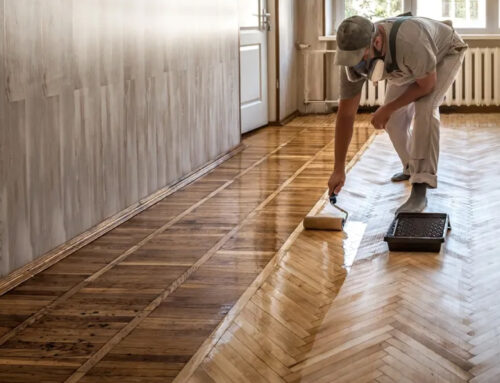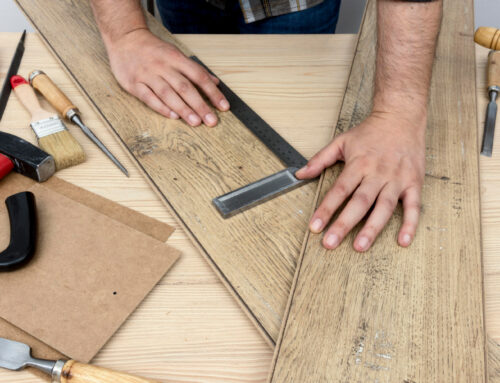The best floor sanding machine for hardwood floors depends on floor size, condition, finish goals, and experience level. A 2,000 square foot home with deeply scratched oak floors needs different equipment than a small bedroom with minor surface wear.
Belt sanders handle aggressive material removal and leveling across large areas. Planetary sanders deliver efficient flattening with multiple sanding heads. Edge sanders reach corners and baseboards. Buffers perfect the final surface. Most complete floor refinishing projects require at least two machines working together. Understanding which combination suits your situation saves time, money, and potential floor damage.
Why is Choosing the Right Floor Sander Important?
Using the wrong sanding machine can permanently damage hardwood floors, costing thousands in repairs or replacement.
Belt sanders in inexperienced hands create waves and gouges that require professional correction. Too-aggressive grits tear wood fibers instead of smoothing them. Inadequate dust collection embeds particles into the wood, creating visible imperfections under finish coats.
Benefits of using the right machine:
- Removes old finish efficiently without damaging wood
- Creates smooth, level surfaces ready for staining
- Minimizes dust exposure and cleanup time
- Reduces physical strain during extended sanding sessions
- Achieves professional results that increase home value
Hardwood flooring is a major investment, whether it’s oak, maple, or another high-quality species. Installation and refinishing can be costly, and full replacement runs even higher. Choosing the right sanding equipment helps protect that investment and ensures results that match professional standards.
The learning curve varies dramatically between machine types. Planetary sanders and buffers forgive minor technique errors. Belt sanders amplify every mistake. Matching machine capability to user skill prevents costly disasters.
4 Types of Floor Sanding Machines for Sale
Different sanders serve specific purposes in the refinishing workflow. Most projects need multiple machine types working in sequence.
1. Belt Sanders
Belt sanders are the heavy hitters when it comes to sanding hardwood floors. These powerful machines strip away old finishes and level the floor, setting the stage for a flawless new look. Belt sanders use continuous abrasive belts that provide consistent material removal with more forgiveness than traditional drum-style sanders.
The belt configuration provides substantial surface contact, distributing sanding pressure evenly across the floor. This reduces the risk of creating visible marks or gouges while still delivering aggressive material removal. Belt sanders excel at initial heavy sanding on floors with deep scratches, multiple finish layers, or height variations between boards.
Key characteristics:
- Aggressive material removal for leveling
- More forgiving than drum sanders
- Consistent results across the belt width
- Best for initial rough sanding and material removal
- Requires clean wheels and well-maintained drums
Top belt sanders include:
- Pallmann Cobra 8″
- Lagler Hummel 8″
- American Sanders FloorCrafter
Belt sanders demand proper technique. They remove wood efficiently, which means mistakes show up quickly. Maintaining steady movement and consistent pressure delivers professional results.
2. Edge Sanders
Edges and tight corners can make or break a hardwood floor’s finish. Edge sanders are game changers, designed to fit perfectly where big flooring machines can’t reach. These machines handle the 3 to 5 inches along walls and in corners where large floor sanders can’t access.
Most edge sanders resemble handheld belt sanders mounted on a base for floor work, though some use disc pads. They require careful control to match the sanding level achieved by the main floor machine without creating visible transitions or low spots.
Critical for:
- Perimeter areas along baseboards
- Staircase treads and risers
- Closets and small rooms
- Around permanent fixtures
- Tight corners and edges
Top edgers include:
- Pallmann Gecko 2.0
- American Sanders Super 7R Edger
- Lagler Flip
Matching grit progression between main floor sanders and edge work ensures a consistent appearance across the entire floor. Edge sanders save time, reduce hassle, and deliver flawless results every time.
3. Planetary Sanders
Uneven surfaces slow down work and spoil the finish. Planetary sanders solve this problem with multiple sanding heads that deliver smooth, even results with less effort. These specialized machines feature rotating discs that work simultaneously to flatten floors efficiently.
The planetary action distributes sanding across multiple contact points, preventing the gouging and waves that single-drum machines can create. This makes planetary sanders particularly effective for leveling uneven floors, removing high spots, and preparing surfaces for final finishing passes.
Advantages:
- Multiple sanding heads for efficient flattening
- Smooth, even results across the entire surface
- Reduces the risk of creating waves or dips
- Less physical effort than traditional sanders
- Excellent for leveling uneven floors
Top planetary sanders include:
- Lagler Trio
- Pallmann Spider
Planetary sanders are trusted by professionals for their ease of use and unbeatable quality when flattening challenging floor surfaces.
4. Buffers and Polishers
The final touch can make or break a hardwood floor’s beauty. Floor buffers are the go-to tool for polishing, cleaning, and prepping surfaces. Buffers, also called floor polishers, perform final smoothing and finish preparation using fine abrasive screens rather than sandpaper.
These machines operate at high speeds with circular pads, smoothing minor imperfections and creating ideal surface texture for finish adhesion. Buffers work across all stages of floor finishing, giving floors that flawless, professional shine while making the work easier.
Primary uses:
- Final surface preparation before staining
- Screening between polyurethane coats
- Light maintenance sanding on finished floors
- Polishing and burnishing applications
- Cleaning and surface prep
Top buffers include:
- American Sanders RS-16DC
- 1600DC Buffer
Buffers are built to last and trusted by experts for perfecting every finish. They’re typically the last mechanical step before applying finish coats.
Best Floor Sander Brands (2025)
Professional-grade equipment from established manufacturers delivers better results and durability than consumer models.
Top Brands and Key Models
Lagler
Lagler is widely considered the benchmark in professional floor sanding. Their machines are built for depth control, stability, and consistent results. The brand’s lineup typically includes high-powered belt sanders, multi-head planetary sanders for flattening, and compact edgers designed for perimeter work. These tools are heavy, durable, and built for contractors who handle large volumes of refinishing projects. Pricing reflects their premium engineering and long service life.
Pallmann
Pallmann produces reliable, innovation-driven sanding equipment designed for efficiency and ease of use. Their range generally includes aggressive belt sanders for material removal, versatile planetary sanders for leveling, and precise edgers for corners and tight spaces. Pallmann tools are engineered for smooth operation and consistent surface quality, with pricing that aligns with other high-performance professional brands.
American Sanders
American Sanders remains one of the most accessible and trusted brands in both rental markets and professional shops. Their equipment line typically features durable belt sanders, strong mid-range edgers, and dependable buffers for screening and final prep. Known for value, availability, and straightforward maintenance, these machines are common across the industry and favored for everyday contracting work.
Festool
Festool specializes in premium portable sanding tools ideal for detail work, on-site touchups, and smaller projects. The brand is known for exceptional dust collection, ergonomic designs, and precision-focused engineering. While not used for full-scale floor flattening, Festool tools excel in fine sanding, edges, stairs, and tight areas.
Finding quality floor sanding machines for sale means balancing budget against project requirements. Rustic Wood Floor Supply carries professional-grade equipment from these trusted manufacturers, backed by warranty and hands-on expertise that helps contractors and installers choose the right tools for the job.
Key Specifications to Compare
- Power: Measured in amps or horsepower. More power handles hardwoods like oak and maple more efficiently. Typical belt sanders run 1.5 to 2.5 HP. Planetary sanders and buffers need similar power ranges for effective operation.
- Dust collection: Integrated vacuum systems or ports for external dust extractors dramatically improve working conditions and results. Look for machines with 90% or better dust capture ratings.
- Ease of use: Weight, control placement, and ergonomics affect operator fatigue and control. Lighter machines maneuver more easily but may lack power for heavy work.
- Availability: Check local rental inventory if buying isn’t practical. Rental rates vary by location and equipment type, but expect daily costs to reflect the machine’s size, power, and professional quality.
How to Choose the Best Sanding Machine for Your Hardwood Floor?
Match equipment to your specific floor conditions, project scope, and skill level for best results. This guide helps you make the right choice.
Step 1: Assess Your Floor Size and Layout
Floor area determines which machine size and type works most efficiently.
Size recommendations:
- Under 500 square feet: Planetary sanders or compact belt sanders handle smaller spaces efficiently
- 500 to 1,500 square feet: Belt or planetary sanders provide a good balance
- Over 1,500 square feet: Full-size belt sanders for initial passes, then planetary for smoothing
- Multiple small rooms: Choose lighter, more maneuverable machines
Tight spaces, lots of doorways, and awkward layouts favor smaller, more agile equipment over heavy-duty production machines. Always pair main floor sanders with edge sanders for complete coverage.
Step 2: Evaluate Floor Condition and Wood Species
Current floor condition dictates how aggressive the sanding approach needs to be.
Floors with deep gouges, multiple finish layers, or noticeable height differences between boards need aggressive belt sanding initially. Severely uneven floors benefit from planetary sanders that flatten efficiently with their multiple sanding heads. Floors showing light scratches or surface wear may only need planetary sanding followed by buffing.
Soft woods like pine and sand quickly but scratch and dent easily, requiring careful technique. Hardwoods like oak, maple, and exotic species need more aggressive equipment, but forgive minor mistakes better. Know the wood species before choosing equipment.
Step 3: Match Machine to Your Skill Level
Honesty about experience prevents expensive mistakes.
For beginners:
Start with planetary sanders on small or low-visibility areas. These machines forgive technique errors while building confidence and skills. Their multiple sanding heads distribute pressure more evenly, making them harder to damage floors with. Buffers are also beginner-friendly for final finishing work.
For experienced users:
Belt sanders become safe options once proper technique, movement speed, and control are understood. Practice on scrap or hidden areas first. Experienced operators can handle the full range of equipment efficiently.
Step 4: Decide Between Renting and Buying
Project plans and budget determine whether renting or purchasing makes more sense.
When to rent:
- One-time refinishing projects
- Testing equipment before committing to purchase
- Avoiding maintenance and storage responsibilities
When to buy:
- Refinishing multiple rooms over time
- Planning future flooring projects
- Running a professional flooring business
- Long-term cost savings on repeated use
Used equipment from reputable sources offers significant savings when inspected properly before purchase.
Tips for Safe and Effective Sanding
Getting great results from floor sanding means following a few key practices that protect both you and your floors.
Get Grit Progression Right:
Think of sandpaper grits like building blocks. Start coarse to remove the tough stuff, then gradually move finer to smooth everything out.
- Heavy damage: Start at 36 grit, then 60, 80, 100, finish at 120
- Light refinishing: Start at 80, move to 100, finish at 120
- Golden rule: Never skip more than one grit level
- Finish the entire floor at one grit before switching to the next
Gear Up for Safety:
Wood dust isn’t just messy but a real health hazard. Proper protection matters:
- N95 or P100 mask (even with dust collection)
- Safety glasses for flying debris
- Hearing protection (machines hit 85-95 decibels)
- Work gloves for handling sandpaper
- Knee pads for edge work
Open windows, run fans, and keep the work area clean. Wood dust can actually explode near sparks or flames.
Keep Dust Under Control:
Use sanders with built-in dust collection or hook up a shop vacuum designed for fine dust. No dust system catches everything, which is why respirators remain necessary. Clean up dust regularly so it doesn’t pile up or get tracked through the house. Dust buildup creates fire risks.
Keep That Sander Moving:
The moment the sander stops moving while running, a dip forms that’ll show through the finish. Remember:
- Keep a steady pace (about one step per second)
- Too fast leaves things rough
- Too slow burns the wood and creates low spots
- Find a rhythm and stick with it
Know When to Stop Sanding:
Floors can only be refinished so many times before hitting the subfloor. Most hardwood handles 3 to 5 refinishing cycles max. Sand just enough to get smooth and level, then stop. More isn’t better.
Follow the Grain:
Always move the sander parallel to the wood grain unless doing serious leveling work on really uneven floors. Going across the grain removes material faster but leaves scratches visible through the finish.
Bottom Line
Selecting the best sanding machine for hardwood flooring comes down to matching equipment with project needs. Belt sanders handle heavy-duty work and leveling on large floors. Planetary sanders use multiple rotating heads to flatten uneven surfaces efficiently and evenly. Edge sanders remain essential for perimeter work regardless of main machine choice. Buffers perfect the final surface before finishing.
For most DIY projects, renting a planetary sander, edge sander, and buffer offers a safe path to professional results. Contractors benefit from owning quality equipment from brands like Lagler, Pallmann, and American Sanders.
Sanding reveals a floor’s true character. Make sure it’s worth revealing. Rustic Wood Floor Supply has spent over 13 years building a reputation for quality over quick profits. Our selection includes only professional-grade floor sanding machines for sale from manufacturers trusted by contractors nationwide.
Get In Touch: (208) 377-0335
Frequently Asked Questions
What type of sanding machine is best for refinishing hardwood floors?
Belt sanders work best for initial heavy sanding and leveling on large floors. Planetary sanders efficiently flatten uneven surfaces with multiple sanding heads. Edge sanders handle perimeter areas where main floor sanders can’t reach. Buffers perform final surface preparation for finishing. Most complete refinishing projects use belt or planetary sanders first, then buffers for final smoothing, plus edge sanders for perimeters.
How do belt sanders differ from planetary sanders?
Belt sanders use continuous abrasive belts for aggressive material removal and leveling, ideal for initial heavy sanding. Planetary sanders use multiple rotating sanding heads that distribute pressure evenly, making them excellent for flattening uneven floors with less risk of creating gouges. Planetary sanders are more forgiving for less experienced users.
How do you sand floor edges and corners?
Dedicated edge sanders, typically disc or belt style, handle the 3 to 5 inches along walls where floor sanders can’t reach. The Pallmann Gecko 2.0, American Sanders Super 7R Edger, and Lagler Flip are professional-grade options. Follow the same grit progression used on the main floor to ensure a consistent appearance and avoid visible transition lines.
Which hardwood floor sander brands are most recommended by professionals?
Lagler dominates professional preferences due to superior German engineering, build quality, and control. Pallmann equipment receives high marks for reliability and innovation. American Sanders is widely available and respected for proven durability and value. Festool offers premium precision for detail work. These brands represent top-tier choices for contractors doing volume work.
Author Profile
- I have worked in hardwood flooring for the last 8 years. Use to run a company of residential crews as well as a company with gym flooring. If you need floor installation or refinishing help, I should have an answer or at least get you in the right direction.
Latest entries
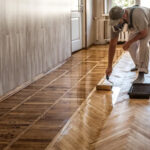 FlooringDecember 10, 2025Wood Floor Restoration in Atlanta: What Affects the Cost
FlooringDecember 10, 2025Wood Floor Restoration in Atlanta: What Affects the Cost FlooringDecember 8, 2025Top 6 Wholesale Hardwood Flooring Solutions for Your Home & Office – Boise, ID
FlooringDecember 8, 2025Top 6 Wholesale Hardwood Flooring Solutions for Your Home & Office – Boise, ID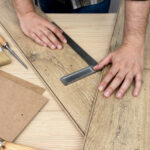 FlooringNovember 25, 2025What Engineered Hardwood Flooring Will Last Longest?
FlooringNovember 25, 2025What Engineered Hardwood Flooring Will Last Longest?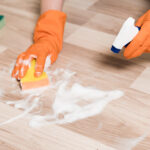 FlooringNovember 22, 2025Best Wood Floor Cleaner Liquid for Hardwood Flooring
FlooringNovember 22, 2025Best Wood Floor Cleaner Liquid for Hardwood Flooring


